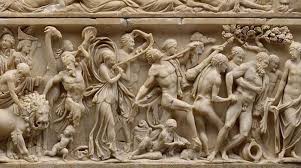Introduction:
Stone sculpting, one of the oldest art forms known to humanity, has evolved remarkably over millennia. From rudimentary carvings in prehistoric caves to the sophisticated masterpieces of modern times, the techniques and tools used by stone sculptors have continuously developed, reflecting advancements in technology, culture, and artistic expression. Join us as we explore the fascinating journey of stone sculpting techniques through history.

1. Prehistoric Beginnings: The Dawn of Stone Sculpting
- Palaeolithic Era (c. 2.5 million - 10,000 BCE):
Early humans used primitive tools like flint and bones to carve into stone. The Venus of Willendorf, a small statuette dating back to around 28,000 BCE, exemplifies the early use of stone for sculptural purposes.
Cave engravings and petroglyphs also marked the dawn of stone sculpting, with simple yet profound carvings representing animals, humans, and abstract symbols.

2. Ancient Civilizations: The Rise of Monumental Sculpture
- Ancient Egypt (c. 3100 - 30 BCE):
The Egyptians pioneered techniques for creating large-scale stone sculptures, using copper chisels, stone hammers, and abrasion tools to carve limestone and granite.
Iconic works like the Great Sphinx of Giza and the statues of Pharaohs showcase the precision and grandeur achieved by Egyptian sculptors.
- Mesopotamia (c. 3500 - 539 BCE):
Mesopotamian sculptors developed relief carving, an art form that involved chiselling images into stone walls. The Stele of Hammurabi, featuring the Code of Hammurabi, is a prime example.
Cylindrical seals with intricate carvings also emerged, used for stamping and creating impressions in clay.

3. Classical Antiquity: Mastery of Form and Proportion
- Ancient Greece (c. 800 - 323 BCE):
Greek sculptors elevated stone carving to new heights, mastering techniques that emphasized realism, anatomy, and movement. The use of marble became prevalent.
Techniques like the contrapposto stance, which portrays a relaxed yet dynamic human posture, are epitomized in statues like the Discobolus (Discus Thrower) by Myron.
- Ancient Rome (c. 753 BCE - 476 CE):
Roman sculptors adopted and refined Greek techniques, focusing on detailed portraits and monumental public works.
Innovations in stone cutting and quarrying allowed for the construction of grand structures adorned with intricate sculptures, such as the Arch of Titus and Trajan's Column.

4. The Middle Ages: Religious and Gothic Influences
- Byzantine Empire (c. 330 - 1453 CE):
Stone carving took on a more symbolic and stylized form, with religious themes dominating the art. Iconography became an essential aspect of Byzantine stone reliefs and sculptures.
Medieval Europe (c. 500 - 1500 CE):
Gothic cathedrals featured elaborate stone sculptures, including gargoyles and biblical scenes. Master masons used techniques like deep relief and intricate detailing to adorn churches and cathedrals.
The tympanum, a semi-circular or triangular decorative wall surface over an entrance, often showcased detailed stone carvings narrating biblical stories.

5. The Renaissance: Revival and Innovation
- Italian Renaissance (c. 1400 - 1600 CE):
A resurgence in classical techniques and aesthetics, combined with new tools and perspectives, defined the Renaissance. Michelangelo’s David exemplifies the era's artistic prowess.
Sculptors used techniques like the lost wax method for bronze casting but also continued to innovate in stone carving, achieving unprecedented levels of detail and realism.

6. Modern and Contemporary: Technology and Abstraction
- 19th and 20th Centuries:
The Industrial Revolution introduced new tools and materials, including pneumatic drills and powered saws, which made stone carving faster and more precise.
Artists like Auguste Rodin pushed the boundaries of traditional stone sculpture, experimenting with form and texture to evoke emotion and movement.
- Contemporary Era:
Modern technology, including 3D modelling and CNC (Computer Numerical Control) machines, has revolutionized stone sculpting, allowing for intricate designs and large-scale projects with high precision.
Contemporary artists blend traditional hand-carving techniques with digital tools, creating works that range from hyper-realistic to abstract and conceptual.
Conclusion:
The evolution of stone sculpting techniques reflects humanity's enduring quest for artistic expression and technological advancement. From the rudimentary carvings of our prehistoric ancestors to the sophisticated works of contemporary artists, stone sculpture has continually transformed, adapting to new tools, materials, and cultural influences. As we look to the future, the marriage of tradition and innovation promises to keep the art of stone sculpting vibrant and ever-evolving, celebrating our shared heritage and pushing the boundaries of creativity.
